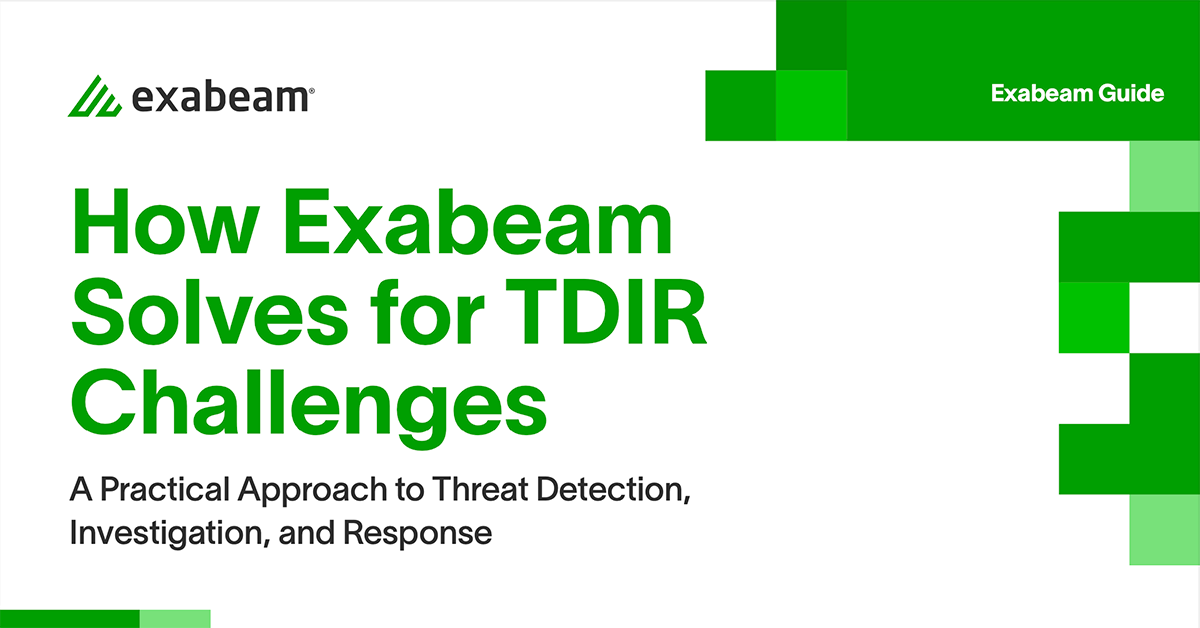The stakes for threat detection, investigation, and response (TDIR) have never been higher. Organizations of all sizes face the challenge of staying ahead of attackers — which is compounded by common issues like limited visibility, complex investigations, and the difficulty of differentiating between normal and abnormal behavior within their environments. For security operations centers (SOCs) of all sizes and maturity levels, these hurdles demand a practical, effective solution.
Exabeam redefines the approach to TDIR with an innovative workflow designed to improve SOC efficiency and efficacy. By integrating rapid data ingestion, a cloud-native data lake, lightning-fast query performance, powerful behavioral analytics, and AI-driven automation, Exabeam shifts cybersecurity from reactive to proactive. This guide illustrates how Exabeam addresses some of the biggest TDIR challenges, including:
- Improved Visibility and SOC Capabilities: The Exabeam Security Operations Platform expands visibility across the TDIR workflow through AI and automation, enabling faster risk identification, streamlined investigations, and consistent responses, while also improving SOC capabilities with standardized approaches and repeatable workflows.
- Streamlined Investigations: Exabeam uses AI-driven automation and pre-built content like the MITRE ATT&CK® framework to swiftly detect and respond to threats. This includes automating tasks such as alert triage and incident investigation, ensuring consistent, reproducible outcomes and freeing SOC analysts to focus on critical tasks.
- Distinguishing Between Normal and Abnormal Behavior: Exabeam UEBA technology uses analytics, machine learning, and deep learning to pinpoint risky behaviors across users, entities, and peer groups. This enables the detection of sophisticated threats, such as credential misuse, insider threats, and AI-generated attacks, accelerating security operations teams’ detection and response times.
Don’t wait to improve your TDIR strategy. Download now!







